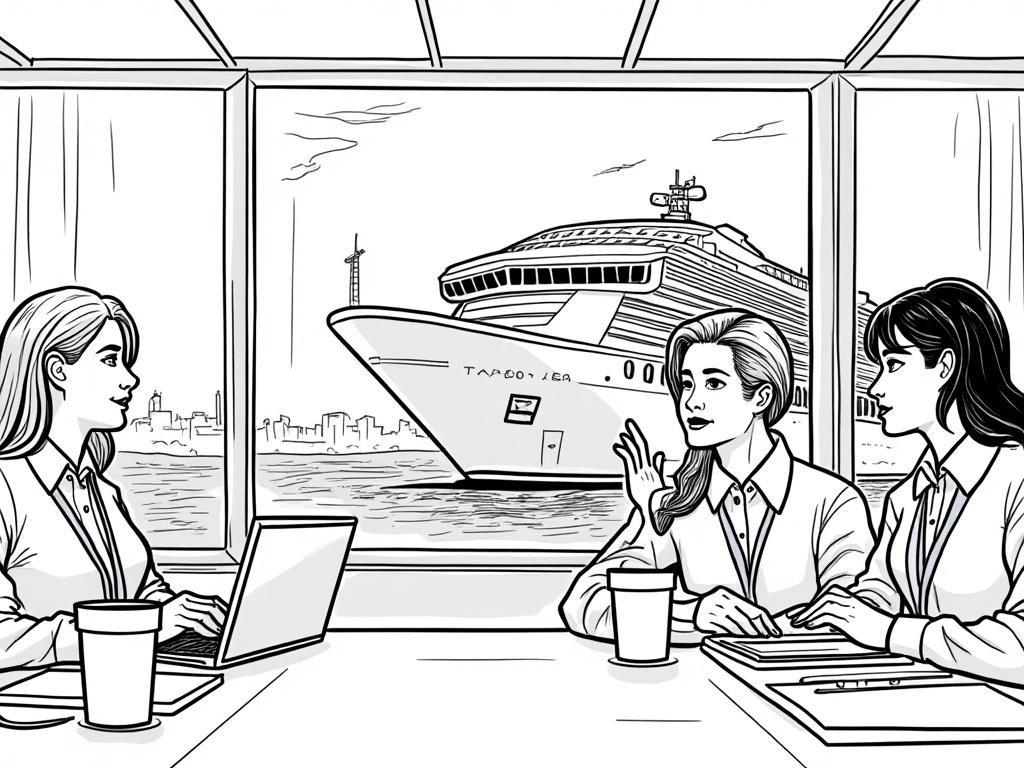
Cruise Ports and Itineraries in Greece: Your Complete Island-Hopping Adventure Guide
Reading time: 12 minutes
Ever dreamed of sailing through crystal-clear waters while ancient temples beckon from sun-drenched shores? Welcome to Greek cruising—where mythology meets Mediterranean luxury, and every port tells a story spanning millennia.
Table of Contents
- Strategic Planning for Greek Cruise Adventures
- Premier Greek Cruise Ports: Your Gateway to Paradise
- Itinerary Insights: Popular Routes and Hidden Gems
- Practical Navigation: Tips for Smooth Sailing
- Future Horizons: Greek cruising trends
- Frequently Asked Questions
Strategic Planning for Greek Cruise Adventures
Planning a Greek cruise isn’t just about booking a cabin—it’s about orchestrating an experience that balances ancient wonder with modern convenience. Let’s break down the strategic approach that transforms casual tourists into savvy Mediterranean explorers.
Understanding Greece’s Cruise Ecosystem
Greece’s cruise infrastructure serves over 5.7 million passengers annually, making it the Mediterranean’s third-largest cruise destination. This popularity stems from the country’s unique positioning: 600 inhabited islands scattered across the Aegean and Ionian seas, each offering distinct cultural experiences within a relatively compact sailing area.
Quick Scenario: Imagine you’re planning a 7-day cruise. What’s your priority—archaeological sites, beach relaxation, or authentic local cuisine? The beauty of Greek cruising lies in its ability to deliver all three, but strategic port selection maximizes your experience.
Seasonal Strategy: Timing Your Greek Odyssey
Here’s the straight talk: May through October represents peak cruising season, but each month offers distinct advantages:
- May-June: Perfect weather, fewer crowds, blooming landscapes
- July-August: Peak season with vibrant nightlife but higher temperatures
- September-October: Ideal conditions with warm seas and comfortable temperatures
Premier Greek Cruise Ports: Your Gateway to Paradise
Greece’s cruise ports serve as cultural time machines, each offering unique experiences that define Mediterranean cruising excellence. Let’s explore the strategic advantages of each major destination.
Piraeus: Athens’ Gateway to Ancient Wonders
As Europe’s largest passenger port, Piraeus handles over 20 million passengers annually. Located just 12 kilometers from Athens center, it serves as the primary embarkation point for Eastern Mediterranean itineraries.
Strategic Advantages:
- Direct access to the Acropolis and Parthenon
- Excellent transportation infrastructure with metro connections
- Comprehensive cruise facilities including duty-free shopping
- Multiple berths accommodating mega-ships up to 370 meters
Well, here’s the reality: Most first-time visitors underestimate the time needed for Athens exploration. The city requires a minimum of 6-8 hours to appreciate its archaeological treasures properly.
Santorini (Thira): The Crown Jewel
Santorini’s volcanic landscape and iconic blue-domed churches make it the most photographed Greek destination. However, the island’s popularity creates unique challenges that strategic planning can overcome.
Key Insights:
- Tender port requiring small boat transfers (15-20 minutes)
- Cable car system with limited capacity (plan for 30-45 minute waits)
- Oia sunset viewing requires early arrival (4-5 PM for 7 PM sunset)
- Local wine tours offer authentic experiences away from crowds
| Port | Tender Required | Typical Duration | Must-See Highlight | Transportation |
|---|---|---|---|---|
| Santorini | Yes | 8-10 hours | Oia Sunset | Cable Car/Donkeys |
| Mykonos | Yes | 6-8 hours | Windmills & Old Town | Tender Boats |
| Crete (Heraklion) | No | 8-12 hours | Knossos Palace | Direct Docking |
| Rhodes | No | 6-10 hours | Medieval Old Town | Walking Distance |
| Corfu | No | 6-8 hours | Achilleion Palace | Taxi/Bus |
Mykonos: Cycladic Charm Meets Cosmopolitan Energy
Known for its vibrant nightlife and pristine beaches, Mykonos attracts over 1.5 million cruise passengers annually. The island’s compact size makes it ideal for short port calls, but strategic planning ensures you experience both its traditional charm and modern sophistication.
Optimization Strategy:
- Morning: Explore Mykonos Town’s narrow streets and iconic windmills
- Midday: Visit Paradise or Super Paradise beaches
- Afternoon: Experience local tavernas in Little Venice
- Evening: Enjoy sunset cocktails before ship departure
Itinerary Insights: Popular Routes and Hidden Gems
Greek cruise itineraries fall into distinct categories, each offering unique advantages for different travel styles. Understanding these patterns helps you select routes that align with your priorities.
Classic Eastern Mediterranean Circuit
The most popular Greek cruise route covers 7-10 days and typically includes:
- Athens/Piraeus: Historical immersion and cultural depth
- Santorini: Romantic sunsets and volcanic landscapes
- Mykonos: Cycladic architecture and beach culture
- Kusadasi, Turkey: Ephesus archaeological site
- Crete: Minoan civilization and diverse landscapes
Cruise Passenger Satisfaction by Port (2023 Data)
Adriatic Explorer: Western Greek Treasures
Less crowded but equally stunning, Western Greek itineraries feature the Ionian Islands:
- Corfu: Venetian architecture and lush landscapes
- Kefalonia: Dramatic cliffs and pristine beaches
- Zakynthos: Famous Shipwreck Beach and Blue Caves
- Croatia connections: Dubrovnik and Split integration
Island-Hopping Intensive Routes
For authentic Greek island experiences, specialized itineraries visit 8-12 smaller islands in 10-14 days. These routes prioritize cultural immersion over mainstream attractions.
Case Study: Seabourn’s Cyclades Explorer visits Paros, Naxos, Syros, and Delos—islands that receive fewer than 100,000 annual cruise visitors combined, offering authentic experiences impossible on mega-ship routes.
Practical Navigation: Tips for Smooth Sailing
Successful Greek cruising requires strategic thinking about logistics, cultural expectations, and practical challenges. Let’s address the most common issues that can impact your experience.
Shore Excursion Strategy: Independent vs. Organized
This decision significantly impacts both cost and experience quality. Here’s the strategic breakdown:
Organized Excursions (Ship-Sponsored):
- Guaranteed return to ship (no risk of missing departure)
- Professional guides with historical expertise
- Premium pricing (often 2-3x independent costs)
- Limited flexibility and rushed schedules
Independent Exploration:
- Cost savings of 50-70% compared to ship excursions
- Flexible timing and personalized experiences
- Risk of transportation delays or missed ship
- Requires research and planning expertise
Currency and Payment Considerations
Greece uses the Euro, but payment methods vary significantly by island size and tourist infrastructure:
Major Ports (Athens, Santorini, Mykonos): Credit cards widely accepted
Smaller Islands: Cash preferred, especially for local tavernas and markets
ATM Availability: Limited on smaller islands; withdraw cash at major ports
Cultural Navigation: Maximizing Local Interactions
Greeks appreciate visitors who show respect for local customs and make effort to engage authentically:
- Meal Timing: Lunch 2-4 PM, Dinner after 8 PM
- Siesta Respect: Many shops close 2-5 PM
- Photography Etiquette: Ask permission before photographing locals
- Tipping Culture: 10-15% in restaurants, round up for taxis
Many travelers considering extended stays in Greece explore options for buying real estate in Greece, particularly after experiencing the country’s lifestyle and investment potential through cruise visits.
Common Challenges and Solutions
Challenge 1: Tender Port Delays
Solution: Book early tender tickets, have backup plans for weather delays, prioritize must-see attractions first.
Challenge 2: Overcrowded Popular Sites
Solution: Visit during early morning or late afternoon, explore alternative viewpoints, book skip-the-line tickets where available.
Challenge 3: Limited Time in Port
Solution: Pre-research must-see attractions, book transportation in advance, focus on 2-3 key experiences rather than rushed sightseeing.
Future Horizons: Evolution of Greek Cruising
The Greek cruise industry continues evolving, driven by sustainability initiatives, infrastructure improvements, and changing traveler preferences. Understanding these trends helps you make informed decisions about future cruise planning.
Sustainable Cruising Initiatives
Greece leads Mediterranean sustainability efforts with €2.8 billion invested in green port infrastructure through 2025. Key developments include:
- Shore power connections reducing ship emissions in port
- Waste management systems handling increased passenger volumes
- Protected marine areas limiting ship sizes and schedules
- Local community benefit programs distributing tourism revenue
Infrastructure Enhancements
Recent port expansions accommodate larger ships while improving passenger experience:
- Piraeus: New terminal handling 8,000 passengers simultaneously
- Heraklion: Expanded berths for 400-meter mega-ships
- Rhodes: Upgraded passenger facilities and transportation links
As cruise tourism evolves, successful Greek exploration balances popular attractions with authentic experiences, leveraging both technological improvements and timeless cultural connections. The key lies in strategic planning that respects local communities while maximizing your Mediterranean adventure.
Ready to transform your Greek cruising dreams into strategic reality? Consider how your port selections, timing decisions, and cultural preparation will shape an experience that extends far beyond typical vacation boundaries.
Frequently Asked Questions
What’s the best time to cruise Greece for optimal weather and fewer crowds?
May and September offer the perfect balance—comfortable temperatures (20-25°C), calm seas, and 30-40% fewer crowds compared to peak summer. April and October provide excellent value but require flexible planning due to occasional weather variations. Avoid July-August unless you enjoy intense heat and maximum tourist density.
How much time do I need at each Greek port to see the main attractions?
Athens requires 8-10 hours for comprehensive exploration including the Acropolis, Agora, and National Archaeological Museum. Santorini needs 6-8 hours to experience both Oia and Fira with proper sunset timing. Mykonos can be thoroughly enjoyed in 4-6 hours due to its compact size. Always add 2-3 hours buffer time for tender ports and transportation delays.
Should I book shore excursions through the cruise line or explore independently?
Use a hybrid strategy: Book ship excursions for complex destinations like Athens (guaranteed timing and expert guides) and explore independently on compact islands like Mykonos and Santorini. Independent exploration saves 50-70% on costs but requires careful timing—always return 1 hour before ship departure. Consider local tour companies for mid-range options offering better value than ship excursions with more flexibility than solo exploration.

Article reviewed by Theodore Whitaker, Cross-Border Real Estate Broker | Global Transaction Facilitator, on June 4, 2025
